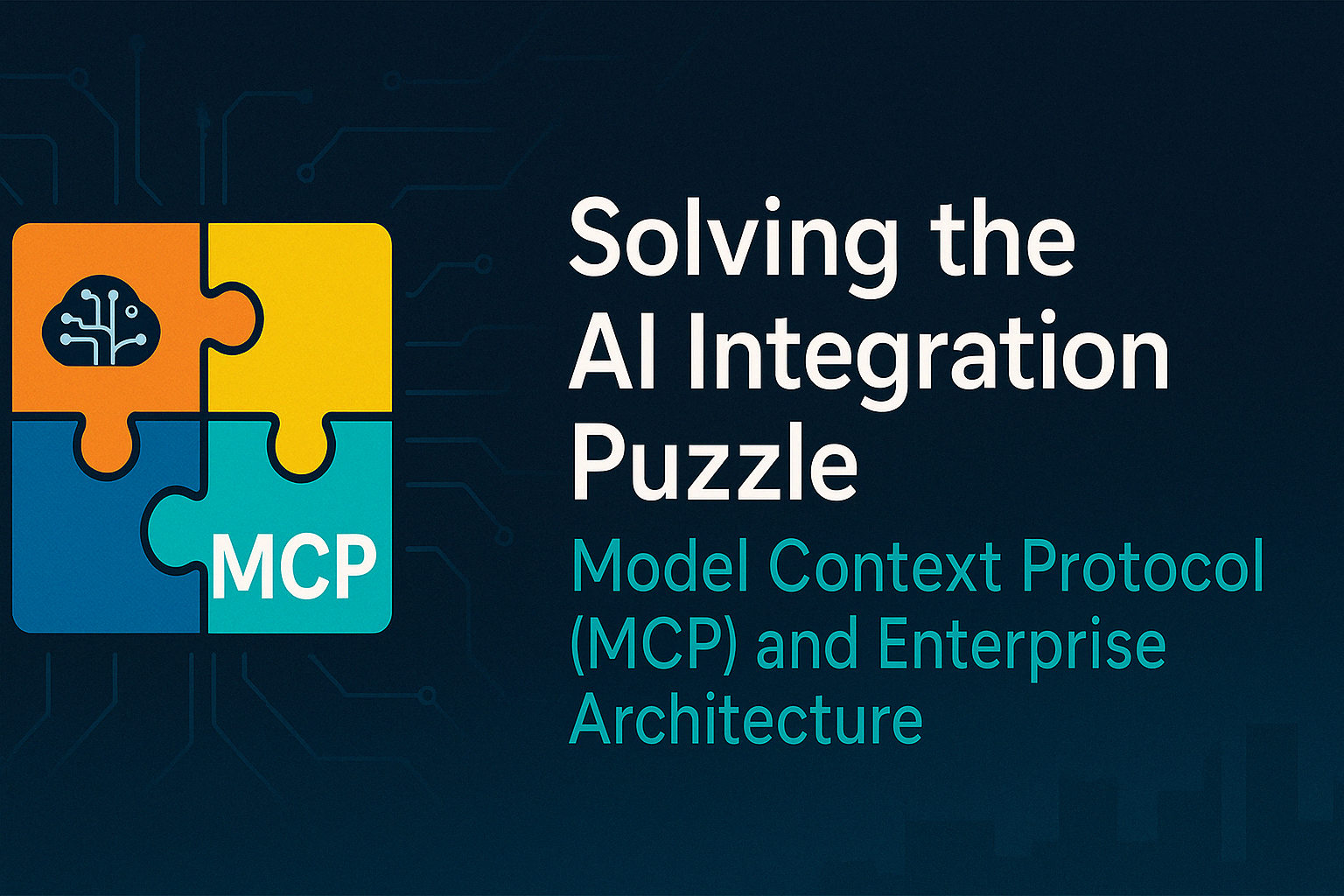Solving the AI Integration Puzzle: How Model Context Protocol (MCP) is Transforming Enterprise Architecture
mindmap
root((Model Context Protocol))
Core Problem
M × N Integration Challenge
Custom Connections Everywhere
Unsustainable Complexity
Architecture Components
Host (Orchestrator)
AI Application Control
Client Management
Request Coordination
Client (Translator)
Universal Bridge
JSON-RPC Communication
Format Translation
Server (Workshop)
Resource Exposure
Tool Functions
Data Access
Implementation Benefits
Faster Development
Improved Reliability
Enhanced Scalability
Reduced Maintenance
Client Types
Generic Clients
Specialized Clients
Asynchronous Clients
Auto-Generated Clients
Ever wondered how AI assistants seamlessly access databases, call APIs, or execute complex calculations? The secret lies in a groundbreaking solution called the Model Context Protocol (MCP). It’s a standardized communication approach that’s revolutionizing AI integration across enterprises.




